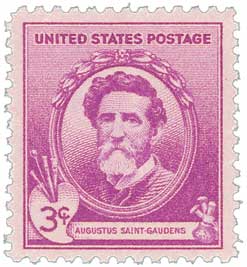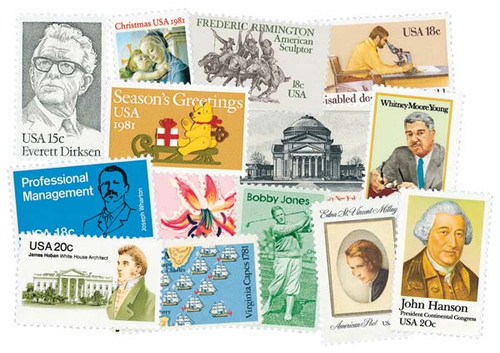
# 1928 - 1981 18c American Architecture: NYU Library
1981 18¢ New York University Library
American Architecture
City: New York, NY
Quantity: 41,827,000
Birth Of Augustus Saint-Gaudens
Saint-Gaudens’ family moved to New York when he was six months old. Saint-Gaudens had an early interest in art and worked as an apprentice to a cameo-cutter in 1861. Around the same time, he also started taking evening art classes at the Cooper Union in New York City.
Saint-Gaudens entered the National Academy of Design in 1863 and in 1867, he went to Paris to study at the Ecole des Beaux-Arts. After three years there he went to Rome to study art and architecture. It was also there that he received his first commissions and met his future wife.
In 1876, Saint-Gaudens won his first major commission to create a bronze statue for the David Farragut Memorial in New York City’s Madison Square Park. Unveiled in 1881, it was very well received and helped Saint-Gaudens establish his reputation as a professional sculptor.
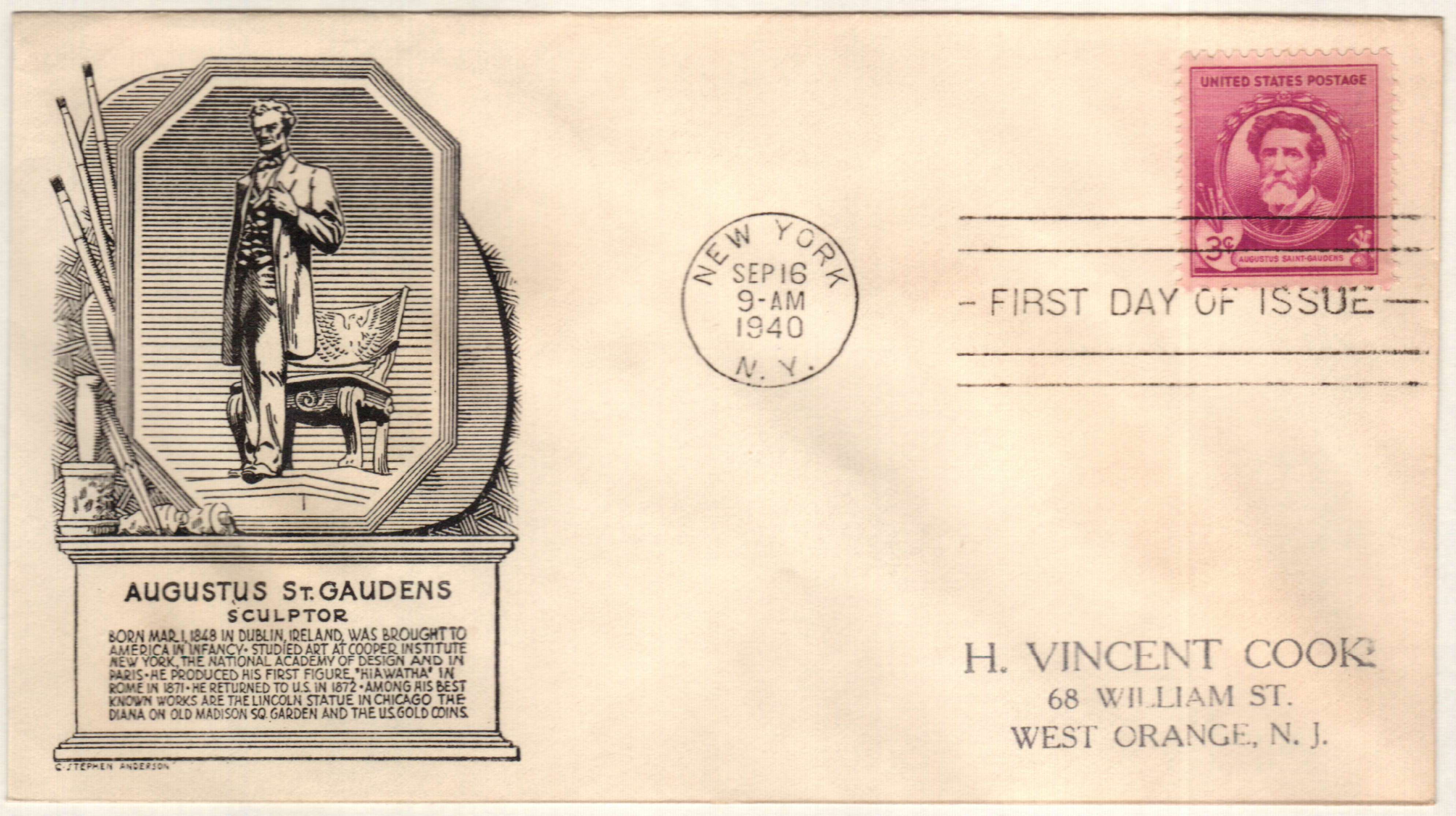
The positive reception to the Farragut memorial helped Saint-Gaudens to quickly receive more commissions. In 1884, he received the commission for Standing Lincoln, in Chicago’s Lincoln Park. Upon its completion in 1887, it was considered the finest portrait statue in the country.
This, in turn, led to more high-profile commissions, including the Adams Memorial, the Peter Cooper Monument, and the John A. Logan Monument. One of the most significant from this period was the Robert Gould Shaw Memorial in Boston Common. Saint-Gaudens worked on it for 14 years and worked on additional versions even after it was unveiled.
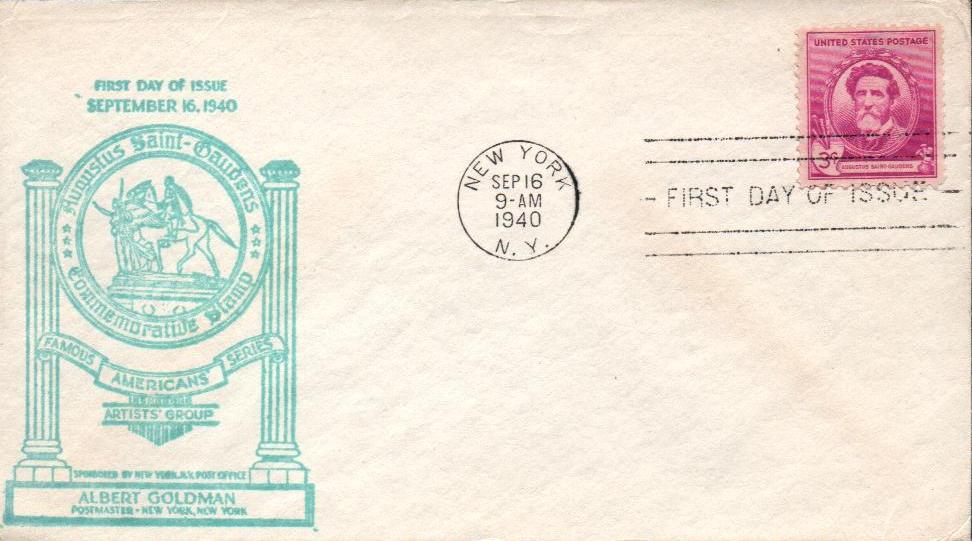
In 1892, Saint-Gaudens began working on Diana, a weather vane statue for the second Madison Square Garden in New York City. Standing atop a 300-foot tower, Diana was the highest point in the city. It was also the first statue in that part of the city to be illuminated at night with electricity.
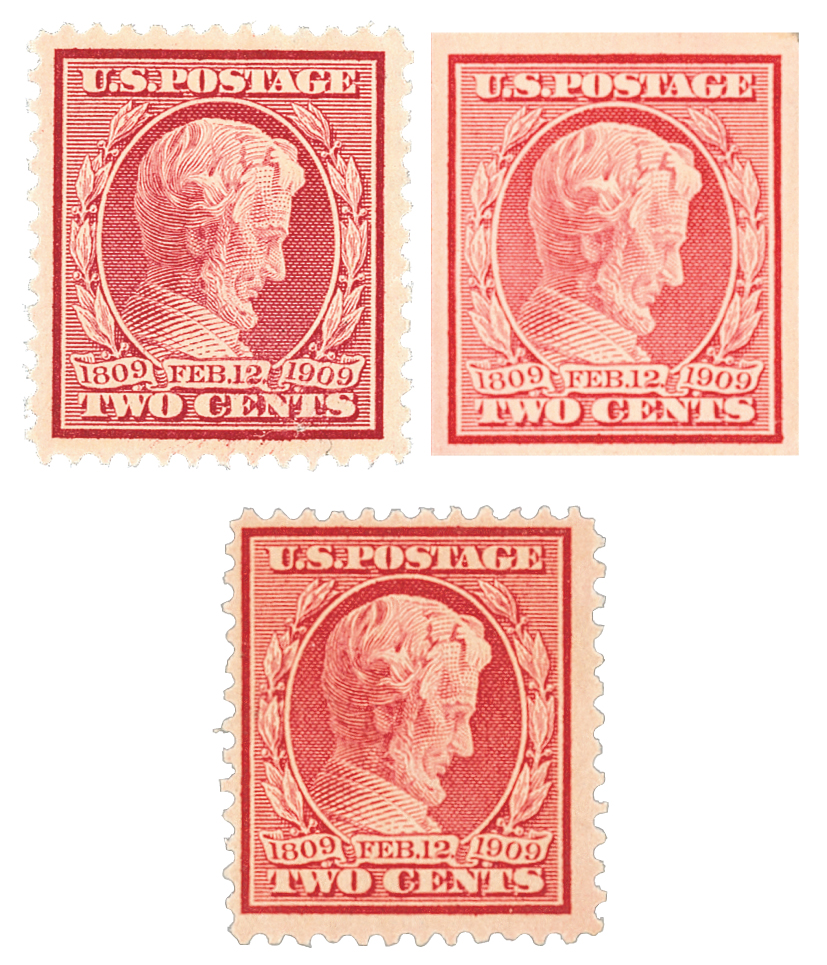
In 1897, Saint-Gaudens was hired to produce a statue of President Lincoln for the centennial of his birth. The resulting seated statue, Abraham Lincoln: The Head of State, was placed in Chicago’s Grant Park. A profile of the statue’s head was also used as the basis for the 1909 Lincoln Centennial stamps.
In addition to statues and monuments, Saint-Gaudens also designed a number of medals, including the World’s Columbian Exposition Medal. He also designed a $20 gold piece, the double eagle, which was produced by the US Mint between 1905 and 1907. Considered one of the most beautiful US coins ever produced, Saint-Gaudens’ design had such high relief that it had to be struck up to 11 times, and was deemed impractical for use because the coins didn’t stack properly. Later, his obverse design was used for the American Eagle coin produced since 1986.
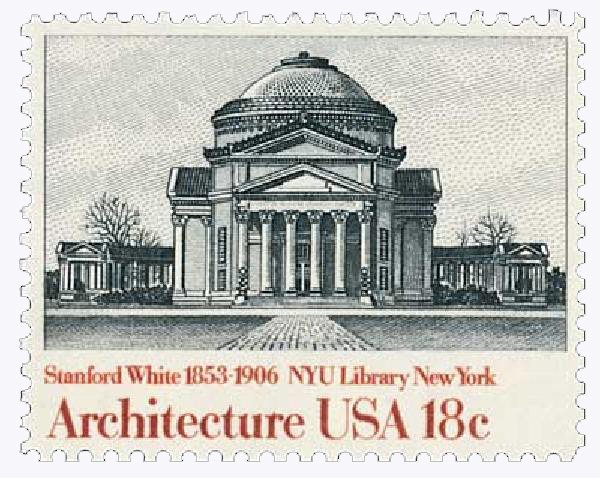
Saint-Gaudens’ fame also made him a popular teacher and advisor. He taught at the Art Students League of New York, served as an artistic advisor to the World’s Columbian Exposition, and supported the American Academy in Rome.
Saint-Gaudens was diagnosed with cancer in 1900 and would spend much of the rest of his life at his family’s home in Cornish, New Hampshire. In spite of his decreased energy, Saint-Gaudens continued to work on a number of reliefs and public sculptures. He died there on August 3, 1907.
Click here to see some of Saint-Gaudens’ other works and here to visit the Saint-Gaudens National Historical Park website for more about his life.
1981 18¢ New York University Library
American Architecture
City: New York, NY
Quantity: 41,827,000
Birth Of Augustus Saint-Gaudens
Saint-Gaudens’ family moved to New York when he was six months old. Saint-Gaudens had an early interest in art and worked as an apprentice to a cameo-cutter in 1861. Around the same time, he also started taking evening art classes at the Cooper Union in New York City.
Saint-Gaudens entered the National Academy of Design in 1863 and in 1867, he went to Paris to study at the Ecole des Beaux-Arts. After three years there he went to Rome to study art and architecture. It was also there that he received his first commissions and met his future wife.
In 1876, Saint-Gaudens won his first major commission to create a bronze statue for the David Farragut Memorial in New York City’s Madison Square Park. Unveiled in 1881, it was very well received and helped Saint-Gaudens establish his reputation as a professional sculptor.

The positive reception to the Farragut memorial helped Saint-Gaudens to quickly receive more commissions. In 1884, he received the commission for Standing Lincoln, in Chicago’s Lincoln Park. Upon its completion in 1887, it was considered the finest portrait statue in the country.
This, in turn, led to more high-profile commissions, including the Adams Memorial, the Peter Cooper Monument, and the John A. Logan Monument. One of the most significant from this period was the Robert Gould Shaw Memorial in Boston Common. Saint-Gaudens worked on it for 14 years and worked on additional versions even after it was unveiled.

In 1892, Saint-Gaudens began working on Diana, a weather vane statue for the second Madison Square Garden in New York City. Standing atop a 300-foot tower, Diana was the highest point in the city. It was also the first statue in that part of the city to be illuminated at night with electricity.

In 1897, Saint-Gaudens was hired to produce a statue of President Lincoln for the centennial of his birth. The resulting seated statue, Abraham Lincoln: The Head of State, was placed in Chicago’s Grant Park. A profile of the statue’s head was also used as the basis for the 1909 Lincoln Centennial stamps.
In addition to statues and monuments, Saint-Gaudens also designed a number of medals, including the World’s Columbian Exposition Medal. He also designed a $20 gold piece, the double eagle, which was produced by the US Mint between 1905 and 1907. Considered one of the most beautiful US coins ever produced, Saint-Gaudens’ design had such high relief that it had to be struck up to 11 times, and was deemed impractical for use because the coins didn’t stack properly. Later, his obverse design was used for the American Eagle coin produced since 1986.

Saint-Gaudens’ fame also made him a popular teacher and advisor. He taught at the Art Students League of New York, served as an artistic advisor to the World’s Columbian Exposition, and supported the American Academy in Rome.
Saint-Gaudens was diagnosed with cancer in 1900 and would spend much of the rest of his life at his family’s home in Cornish, New Hampshire. In spite of his decreased energy, Saint-Gaudens continued to work on a number of reliefs and public sculptures. He died there on August 3, 1907.
Click here to see some of Saint-Gaudens’ other works and here to visit the Saint-Gaudens National Historical Park website for more about his life.








